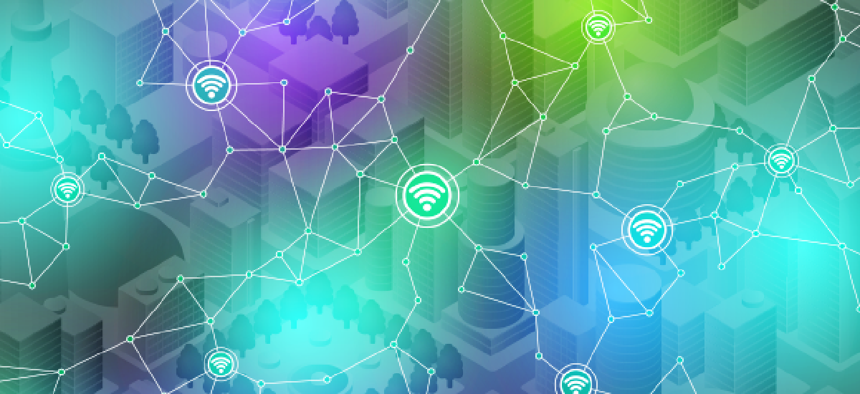Lafayette taps IoT for air quality data


Connecting state and local government leaders
City government, industry and university partners are building an interactive smart city platform for Lafayette, La.
A coalition in Lafayette, La., is starting to take advantage of the city’s gigabit fiber and utility networks to provide near-real-time information on air quality.
Lafayette won a $40,000 grant through the Environmental Protection Agency’s Smart City Air Challenge in December to deploy air quality sensors around the city and make the resulting data publicly accessible. Partners in the project include the Lafayette Consolidated Government, the University of Louisiana at Lafayette and CGI Federal.
“We are deploying 300 air quality sensors around the city and parish that are going to be measuring ozone and particulate matter,” CGI Federal Vice President William LaBar told GCN. “The sensors that we are buying come from different vendors so we are going to be able aggregate a lot of data and compare it across different types of sensors in terms of quality.”
The air quality sensor project is one step in providing an internet of things environment to spur more community innovations. The project is built on the work of Lafayette Utility Services, which built a fiber ring around the community in 1998 and built out fiber access to each home in the community by 2010.
CGI is using an open source application programming interface from the Open Geospatial Consortium called SensorThings to connect devices, data and applications over the web. Lafayette will be using Microsoft’s Azure Cloud host and manage the sensor data the community and university will use.
“SensorThings provides a powerful, open source way to do bidirectional communication with your IoT data management platform and the actual sensors that are deployed in the field,” LaBar said. “We are building an additional set of open source components that we are going to contribute back to the standard.”
The university’s contribution to the project will be creating the platforms, or boxes, that contain the sensors and making sure they will be able weather the elements.
“Our goal was to put out a whole bunch of lower end devices instead of high-end devices to be able to scale them out,” said Matthew Delcambre, director of the Center for Business and Information Technology at the university’s Informatics Research Institute. “Because they are in traffic areas in some cases, we can start to correlate between our traffic monitoring and air quality systems.”
CGI hopes to start giving reports on the data from the air quality sensors by end of this calendar year.
“We are still in the stage of where we are building the initial prototypes of the sensors,” LaBar said. “We want to understand what works when it comes to them being exposed to different environmental conditions that are unique to the Gulf Coast, state of Louisiana and Lafayette-- like large amounts of humidity.”
The interoperability of the fiber network has CGI looking at other ideas to make the city smarter, like water management.
In 2016, several parishes in Louisiana flooded when they got as much two feet of rain in a 48-hour period. The Lower Mississippi River Forecast Center of the National Weather Service estimated this type of rainfall in the region had 0.1 percent chance of happening in any year.
“There is a lot of interest in expanding some of the data collection into storm water management or water quality management to help with land use planning and transportation management,” LaBar said.
The first two air quality sensors went online in Lafayette right before start of Cajun Code Fest, an annual coding competition, run by the university on March 29.
For the event, the city opened up its datasets on the budget, public works, crime assessment and parks and recreation -- in addition to the air quality information -- to 12 teams that created apps based on the data.
“One of the more interesting applications was around emergency evacuations,” Delcambre told GCN. “We just published the API data for the air quality sensors a couple of days before, so unfortunately we didn’t have a lot of teams who were able to take advantage of it.
Lafayette is also working with parish public schools on science, technology, engineering and mathematics programs to get students interested in IoT initiatives.
“Pursuing smart city solutions in order to transform how LCG services and interacts with citizens and businesses is critical to economic growth in Lafayette,” Lafayette Mayor-President Joel Robideaux said. “Integrating our information systems and enabling open data initiatives will foster our economy, improve government services and increase citizen engagement.”
Smart Lafayette is a finalist for the American Council for Technology and Industry Advisory Council (ACT-IAC) Igniting Innovation contest. Award winners will be announced during an open showcase in Washington, D.C., on April 26.
NEXT STORY: Moving toward a one-stop shop for FOIA requests




